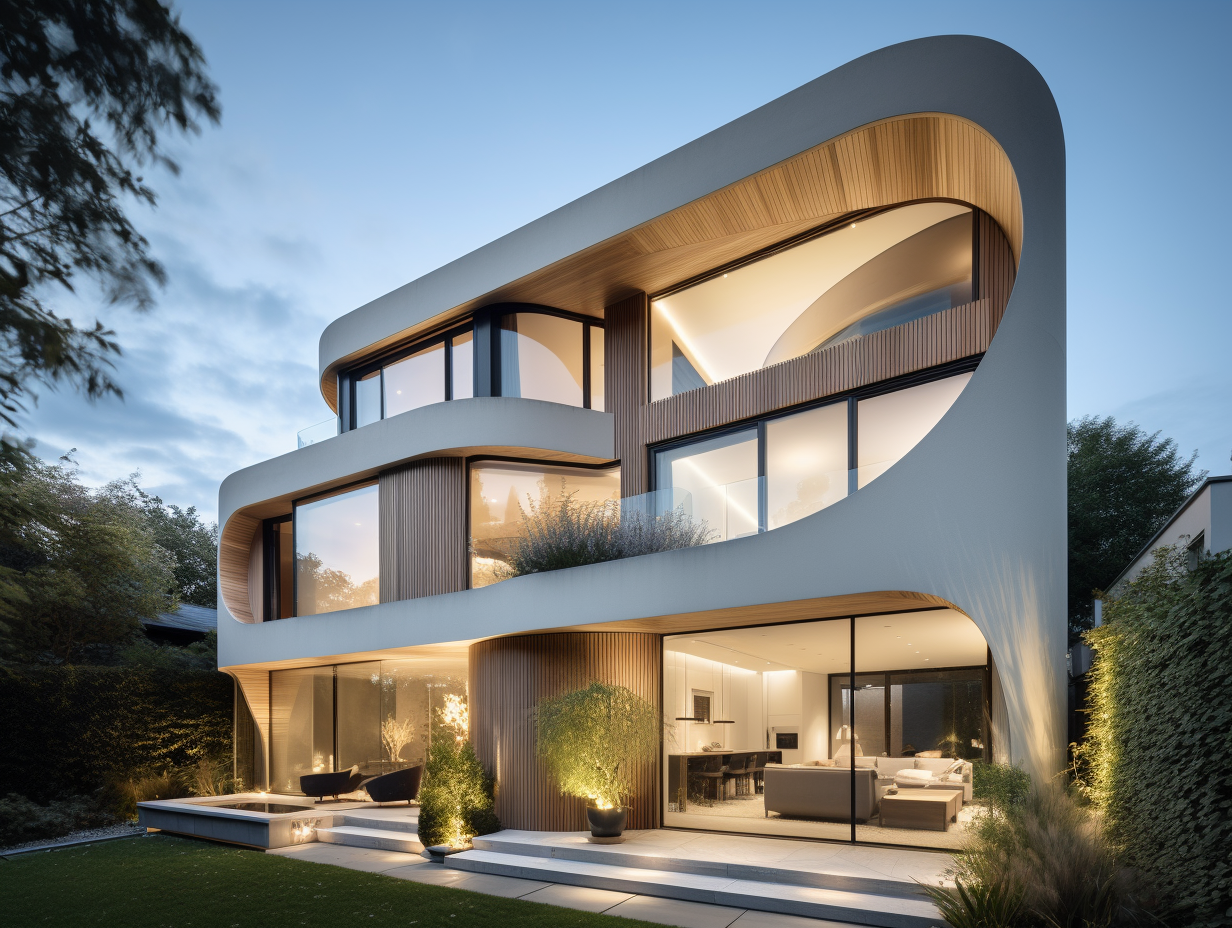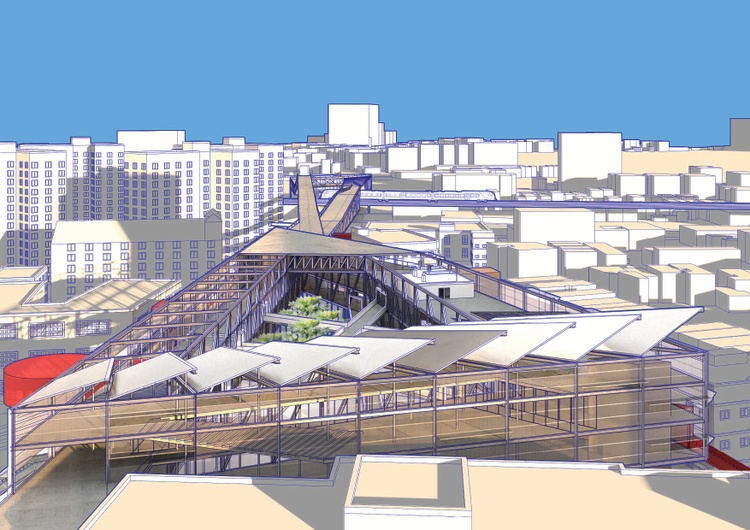Why CDA Architects Are Leaders in Architectural Design and Innovation
Why CDA Architects Are Leaders in Architectural Design and Innovation
Blog Article
An Extensive Introduction of Architectural Styles and Their Impact on Modern City Planning and Advancement
Architectural designs have actually long offered as a mirror to the social values and technological developments of their time, playing a crucial function in forming contemporary city preparation and development. From the majesty of Neoclassicism to the practical technique of Brutalism, each design has actually presented distinct principles that affect city visual appeals and functionality.

Historic Summary of Building Designs
Throughout history, architectural styles have advanced in action to cultural, technological, and ecological variables. Each period shows the dominating worths, ideas, and improvements of its time, resulting in a rich tapestry of style that symbolizes human creative thinking and adaptation. The ancient people, such as the Egyptians and Greeks, established fundamental styles that highlighted symmetry and proportion, offering both useful and visual objectives.
As societies transitioned through the Middle Ages, Gothic style emerged, identified by its verticality and complex outlining, mirroring the spiritual desires of the age. The Renaissance noted a resurgence of classical perfects, combining art and style in ingenious manner ins which influenced succeeding designs across Europe.
The Industrial Transformation presented brand-new materials and construction methods, motivating motions like Modernism, which tested typical kinds and welcomed simplicity and functionality. The 20th century saw a diversification of designs, with Postmodernism responding against the stark minimalism of its precursor, including historical recommendations and eclectic components.
Today, architectural styles proceed to advance, driven by globalization and sustainability problems, showing a vibrant interaction between heritage and development (cda architects). This historic review emphasizes the relevance of style as a mirror of social evolution and as a stimulant for urban development
Trick Architectural Styles Explained
The diversity of building styles reflects the myriad influences that shape our developed atmosphere, each embodying unique attributes and cultural importances. Key architectural styles consist of Classical, Gothic, Baroque, Innovation, and Postmodernism, each representing special historic contexts and aesthetic viewpoints.
Timeless architecture, rooted in ancient Greece and Rome, highlights proportion, percentage, and making use of columns. In contrast, Gothic design, flourishing between Ages, is characterized by sharp arcs, ribbed vaults, and flying buttresses, developing a heavenly high quality in cathedrals. Baroque style, emerging in the 17th century, is marked by splendour, intricate ornamentation, and a vibrant interplay of light and shadow.
Modernism, which acquired momentum in the early 20th century, prioritizes feature over type, making use of brand-new products like steel and glass to create minimalist frameworks. Postmodernism, responding against the austerity of Innovation, embraces eclecticism and historical referral, usually integrating playful elements and paradox.
Comprehending these designs offers insight into the social stories and technical improvements of their respective eras, highlighting just how style offers not just as a sanctuary, but as a representation of societal worths and aspirations.
Effect On Urban Planning
In shaping the development of cities, architectural designs dramatically influence metropolitan preparation choices. The selection of building style frequently determines the visual appeals, performance, and general character of city settings.
Furthermore, building styles can affect zoning policies and land make use of policies. Urban planners have to think about the dominating building fads when developing districts, making certain that new developments balance with existing frameworks. This consideration promotes natural urban landscapes and enhances community identity.
The application of certain building styles can additionally affect socioeconomic variables within a city. Premium contemporary layouts may draw in wealthy residents and organizations, leading to gentrification, while extra inexpensive housing services could focus on practical and lasting styles to accommodate diverse populations. Ultimately, the interplay in between architectural designs and city planning produces vibrant cities that mirror both historic context and modern demands, forming the lived visit here experiences of their inhabitants.
Sustainability and Modern Style

Contemporary architectural activities, such as biophilic style and environment-friendly design, advocate for structures that balance with their surroundings, utilizing natural materials and promoting biodiversity. These styles often include renewable resource sources, such as photovoltaic panels and wind generators, to decrease dependence on fossil gas and lower carbon impacts.
Moreover, the combination of innovative technologies, such as wise structure systems, boosts energy administration, optimizing source usage while making certain resident comfort. Cutting-edge water monitoring techniques, consisting of rain harvesting and greywater recycling, additional add to sustainable city atmospheres.
Significantly, sustainability expands past ecological problems; it encompasses social and economic dimensions. By fostering neighborhood wellness and advertising inclusivity, modern-day building designs straighten with sustainable development goals. Subsequently, the advancement of building techniques remains to form resilient Visit Website cities that not only fulfill the demands of the present but likewise protect the future for generations to come.
Neighborhood Engagement in Layout
Area involvement in layout functions as a critical bridge in between designers and the populaces they offer, making certain that the constructed atmosphere reflects the demands and desires of its individuals. This collective process welcomes neighborhood participants to contribute their understandings and choices, fostering a sense of possession and duty towards the spaces they live in.
Effective neighborhood interaction utilizes various techniques, such as workshops, studies, and public forums, to collect diverse viewpoints. These strategies facilitate a two-way discussion, allowing designers to recognize local contexts while encouraging homeowners to articulate their issues and desires. This inclusivity not only improves the layout quality yet likewise advertises social equity by resolving the distinct challenges encountered by marginalized groups.
Furthermore, community interaction can cause ingenious remedies that might not emerge in a typical style procedure. By incorporating local understanding and cultural worths, designers can create spaces that reverberate even more deeply with users, boosting usability and sustainability. Eventually, focusing on neighborhood involvement in design processes causes environments that nurture social communications, assistance well-being, and reinforce neighborhood connections, consequently playing a pivotal function in forming modern city landscapes.
Verdict
Architectural designs have actually greatly affected modern city preparation and advancement, mirroring evolving official site cultural and technical contexts. The assimilation of historical visual appeals with modern needs cultivates metropolitan settings that focus on sustainability and community engagement. As cities remain to expand and adjust, the ongoing discussion in between architectural heritage and contemporary design concepts will remain vital in producing inclusive, lively rooms that boost lifestyle and promote social equity. The future of city growth rest on this unified equilibrium.
Report this page